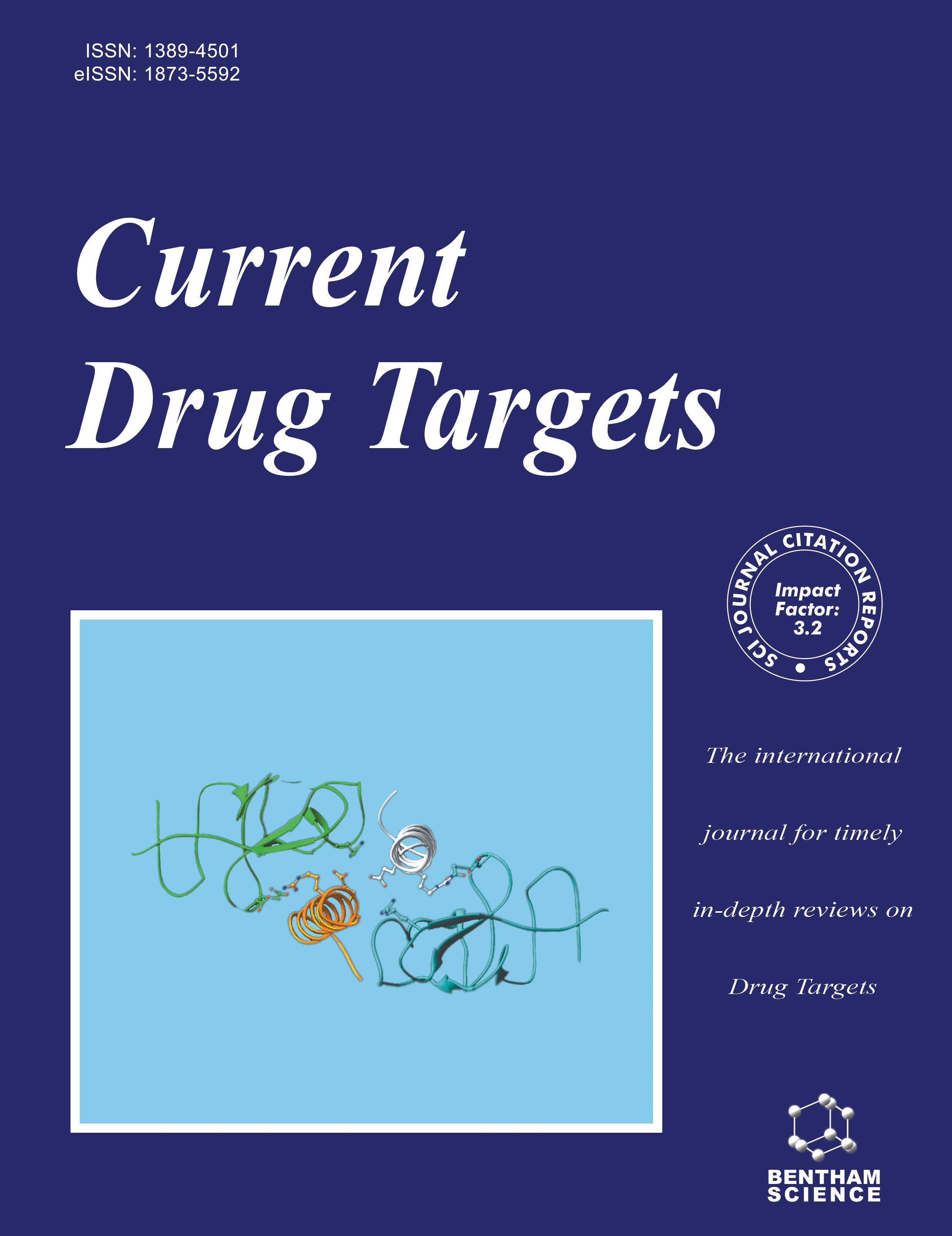- Home
- A-Z Publications
- Current Drug Targets
- Previous Issues
- Volume 24, Issue 1, 2023
Current Drug Targets - Volume 24, Issue 1, 2023
Volume 24, Issue 1, 2023
-
-
Nanotechnology for Targeted Drug Delivery to Treat Osteoporosis
More LessAuthors: Malkiet Kaur, Manju Nagpal and Geeta AggarwalBone diseases such as rheumatoid arthritis, Paget's disease, and osteoporosis cause mortality and mobility limits. Nanomedicine and nano delivery systems have been utilised to deliver active drug moiety to the precisely targeted site in a controlled manner, and it serves as a means of diagnostic tools. The utilisation of nanomedicine is expanding vigorously for assured targeting and efficient drug delivery. Nanotechnolog Read More
-
-
-
Advancements and Utilizations of Scaffolds in Tissue Engineering and Drug Delivery
More LessAuthors: Akash Chauhan, Md. A. Alam, Awaneet Kaur and Rishabha MalviyaThe drug development process requires a thorough understanding of the scaffold and its three-dimensional structure. Scaffolding is a technique for tissue engineering and the formation of contemporary functioning tissues. Tissue engineering is sometimes referred to as regenerative medicine. They also ensure that drugs are delivered with precision. Information regarding scaffolding techniques, scaffolding kinds, and other rele Read More
-
-
-
Metformin: A Promising Antidiabetic Medication for Cancer Treatment
More LessAuthors: Wei Mu, Yunyun Jiang, Guoqiang Liang, Yue Feng and Falin QuMetformin is a widely used drug in patients with type 2 diabetes mellitus. Metformin inhibits hepatic gluconeogenesis and increases glucose utilization in peripheral tissues. In recent years, several studies have shown that metformin is a potential therapeutic agent against cancer, alone or combined with other anticancer treatments. Metformin mainly activates the AMPK complex and regulates intracellular energy status, in Read More
-
-
-
Combinatory Approaches Targeting Cognitive Impairments and Memory Enhancement: A Review
More LessAuthors: Varun S. Gupta and Pravin Popatrao KaleThe objective of this paper is to look at how natural medicines can improve cognition and memory when used with sildenafil, a popular erectile dysfunction medicine that also has nootropic properties. Newer treatment strategies to treat the early stages of these diseases need to be developed. Multiple factors lead to complex pathophysiological conditions, which are responsible for various long-term complications. In Read More
-
-
-
A Comprehensive Review on Nanomedicine: Promising Approach for Treatment of Brain Tumor through Intranasal Administration
More LessAuthors: Shiv Bahadur and Anubhav PrakashBrain tumors have become one of the deadliest cancers; however, their treatment is still limited by conventional approaches. Brain tumors, among other CNS diseases, are the most lethal form of cancer due to ineffective diagnosis and profiling. The major limiting factor in treating brain tumors is the blood-brain barrier (BBB), and the required therapeutic concentration is not achieved. Hence, most drugs are prescribed at higher Read More
-
-
-
An Insight into Diverse Activities and Targets of Flavonoids
More LessAuthors: Prashant Tiwari, Rakhi Mishra, Avijit Mazumder, Rupa Mazumder and Ayushi SinghBackground: Flavonoids belong to the chemical class of polyphenols and are in the category of secondary metabolites imparting a wide protective effect against acute and chronic diseases. Objective: The study aims to investigate and summarize the information of various flavonoids extracted, isolated from various sources, and possess different pharmacological properties by acting on multiple targets. Methods: This comprehen Read More
-
Volumes & issues
-
Volume 26 (2025)
-
Volume 25 (2024)
-
Volume 24 (2023)
-
Volume 23 (2022)
-
Volume 22 (2021)
-
Volume 21 (2020)
-
Volume 20 (2019)
-
Volume 19 (2018)
-
Volume 18 (2017)
-
Volume 17 (2016)
-
Volume 16 (2015)
-
Volume 15 (2014)
-
Volume 14 (2013)
-
Volume 13 (2012)
-
Volume 12 (2011)
-
Volume 11 (2010)
-
Volume 10 (2009)
-
Volume 9 (2008)
-
Volume 8 (2007)
-
Volume 7 (2006)
-
Volume 6 (2005)
-
Volume 5 (2004)
-
Volume 4 (2003)
-
Volume 3 (2002)
-
Volume 2 (2001)
-
Volume 1 (2000)
Most Read This Month
Article
content/journals/cdt
Journal
10
5
false
en


